Myths about teaching can hold you back


- Year 8
Formal angle notation
I can use conventional terms and notations for lines, rays, segments and angles.


- Year 8
Formal angle notation
I can use conventional terms and notations for lines, rays, segments and angles.
These resources will be removed by end of Summer Term 2025.
Switch to our new teaching resources now - designed by teachers and leading subject experts, and tested in classrooms.
These resources were created for remote use during the pandemic and are not designed for classroom teaching.
Lesson details
Key learning points
- It is important to use and understand the mathematical word line.
- It is important to use and understand the mathematical word ray.
- It is important to use and understand the mathematical phrase line segment.
- It is important to use and understand the mathematical word angle.
Keywords
Line - A line is a straight 1D figure that does not have a thickness, and it extends forever in both directions.
Ray - A ray is a part of a line with a fixed starting point that extends forever in one direction.
Line segment - A line segment is a part of a line with a fixed start point and a distinct fixed end point.
Common misconception
I can draw a 7 cm line with my ruler.
A line is a linear path that continues forever in both directions. We can draw line segments with a ruler, which have distinct endpoints.
To help you plan your year 8 maths lesson on: Formal angle notation, download all teaching resources for free and adapt to suit your pupils' needs...
To help you plan your year 8 maths lesson on: Formal angle notation, download all teaching resources for free and adapt to suit your pupils' needs.
The starter quiz will activate and check your pupils' prior knowledge, with versions available both with and without answers in PDF format.
We use learning cycles to break down learning into key concepts or ideas linked to the learning outcome. Each learning cycle features explanations with checks for understanding and practice tasks with feedback. All of this is found in our slide decks, ready for you to download and edit. The practice tasks are also available as printable worksheets and some lessons have additional materials with extra material you might need for teaching the lesson.
The assessment exit quiz will test your pupils' understanding of the key learning points.
Our video is a tool for planning, showing how other teachers might teach the lesson, offering helpful tips, modelled explanations and inspiration for your own delivery in the classroom. Plus, you can set it as homework or revision for pupils and keep their learning on track by sharing an online pupil version of this lesson.
Explore more key stage 3 maths lessons from the Geometrical properties: polygons unit, dive into the full secondary maths curriculum, or learn more about lesson planning.

Licence
Prior knowledge starter quiz
6 Questions
Q1.Which of these statements are true about this triangle?
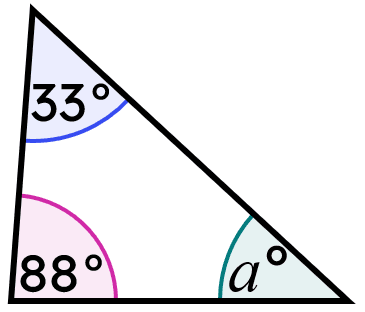
Q2.This triangle is scalene. Which of these are possible values of $$b$$?
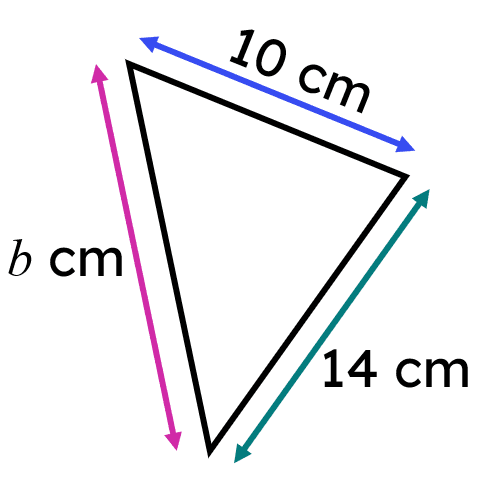
Q3.Which of these statements are correct for this triangle?
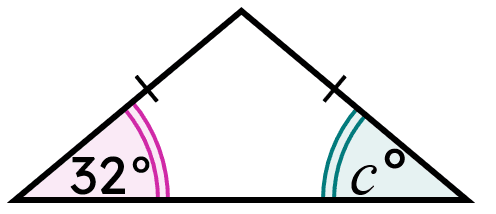
Q4.This diagram shows two intersecting line segments. Match each angle or justification for the size of angles $$d$$° and $$e$$° to the correct value or statement.
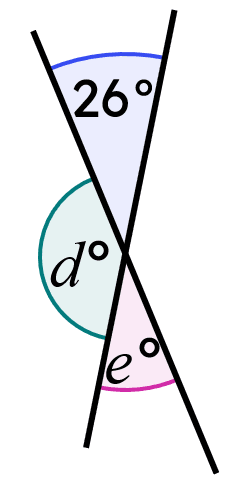
size of angle $$\text{ }d$$° -
154°
size of angle $$\text{ }e$$° -
26°
justification for size of angle $$d$$ -
angles about a point on a straight line sum to 180°
justification for size of angle $$e$$° -
vertically opposite angles are equal
not an angle on this diagram -
52°
Q5.PQ and RS are straight line segments. Match each angle or justification for the size of angles $$g$$° and $$h$$° to the correct statement.
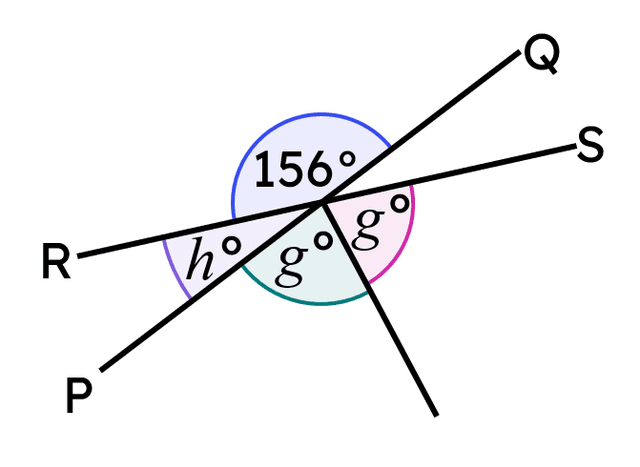
size of angle $$\text{ }g$$° -
78°
size of angle $$\text{ }h$$° -
24°
justification for angle $$g$$° -
half of the angle that is vertically opposite 156°
justification for angle $$h$$° -
angles about a point on a straight line sum to 180°
not a complete justification -
vertically opposite angles are equal
not angle $$\text{ }g° \text{or }h°$$ -
156°
Q6.Three different triangles each have an angle of 40°. Match the name of each triangle to their possible angles.
isosceles -
another angle of 40° and one 100°
scalene -
one angle of 82° and another of 58°
right-angled scalene -
an angle of 90° and one of 50°
equilateral -
impossible to have this triangle with an angle of 40°
Assessment exit quiz
6 Questions
Q1.Match each linear path to its name.

linear path A -
ray
linear path B -
line
linear path C -
line segment
Q2.Which of these linear paths will pass through point X?
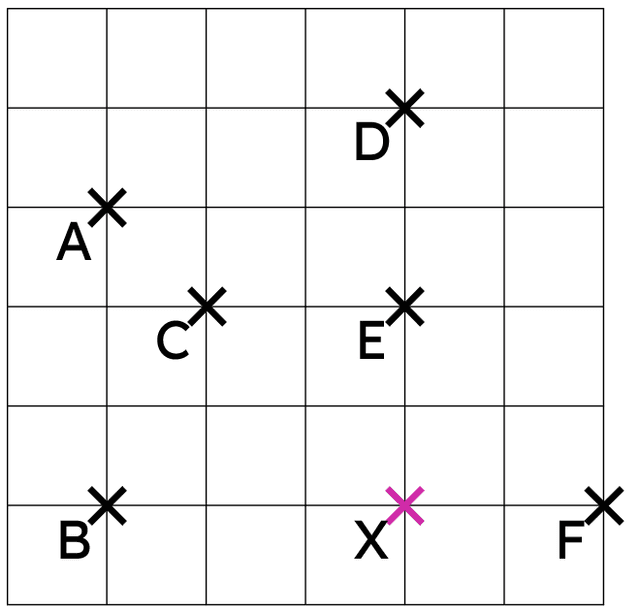
Q3.Match each angle given in three-point notation to the angle represented by a letter.
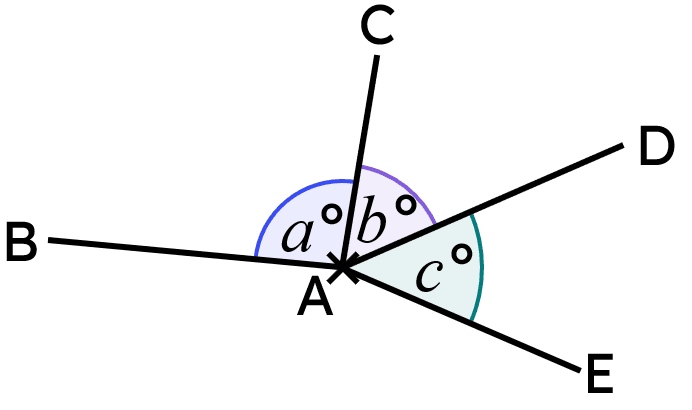
∠CAD -
$$b$$°
∠EAD -
$$c$$°
∠BAC -
$$a$$°
∠BAD -
$$(a + b)$$°
Q4.Match each angle given in three-point notation to its size.
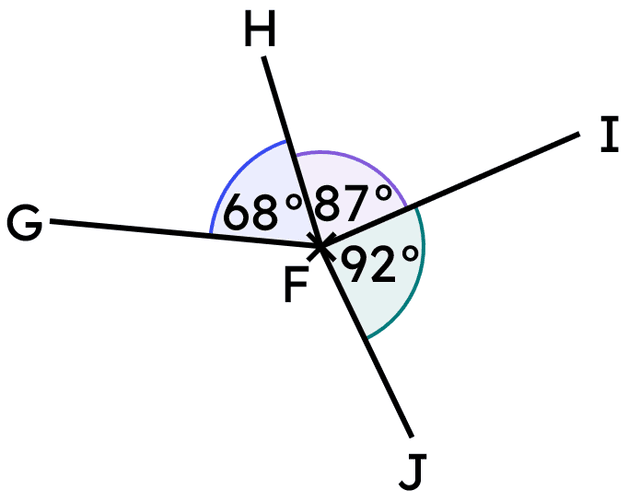
∠HFI -
87°
∠GFI -
155°
∠HFJ -
179°
∠GFJ -
113°
reflex ∠GFJ -
247°
Q5.$$\theta$$° = 87°. Match each type of angle to a correct angle from the diagram.
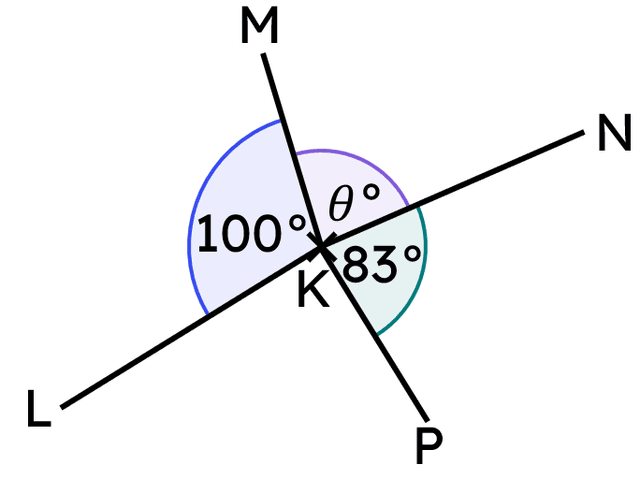
acute -
∠MKN
right angle -
∠LKP
obtuse -
∠MKP
reflex -
100° + $$\theta$$°
Q6.Each square on this grid is one unit in length. Match the line segment to the correct description.
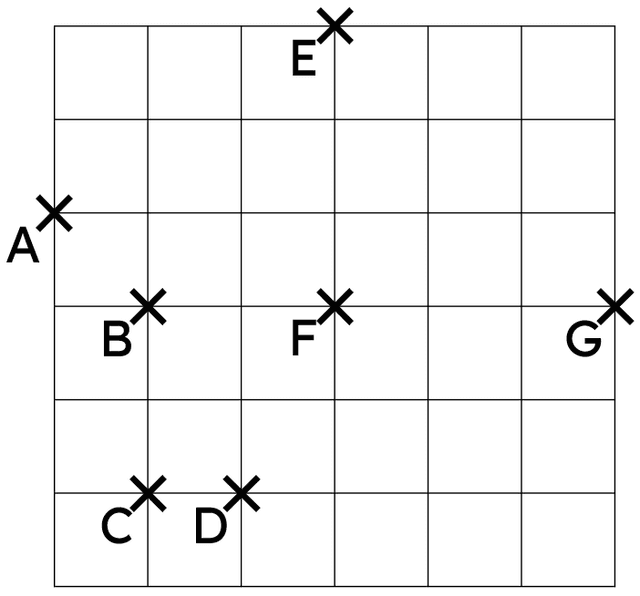
CD -
Line segment parallel to BF
EF -
Line segment perpendicular to CD
BG -
Line segment with a length of 5 units
EG -
Line segment parallel to AB

